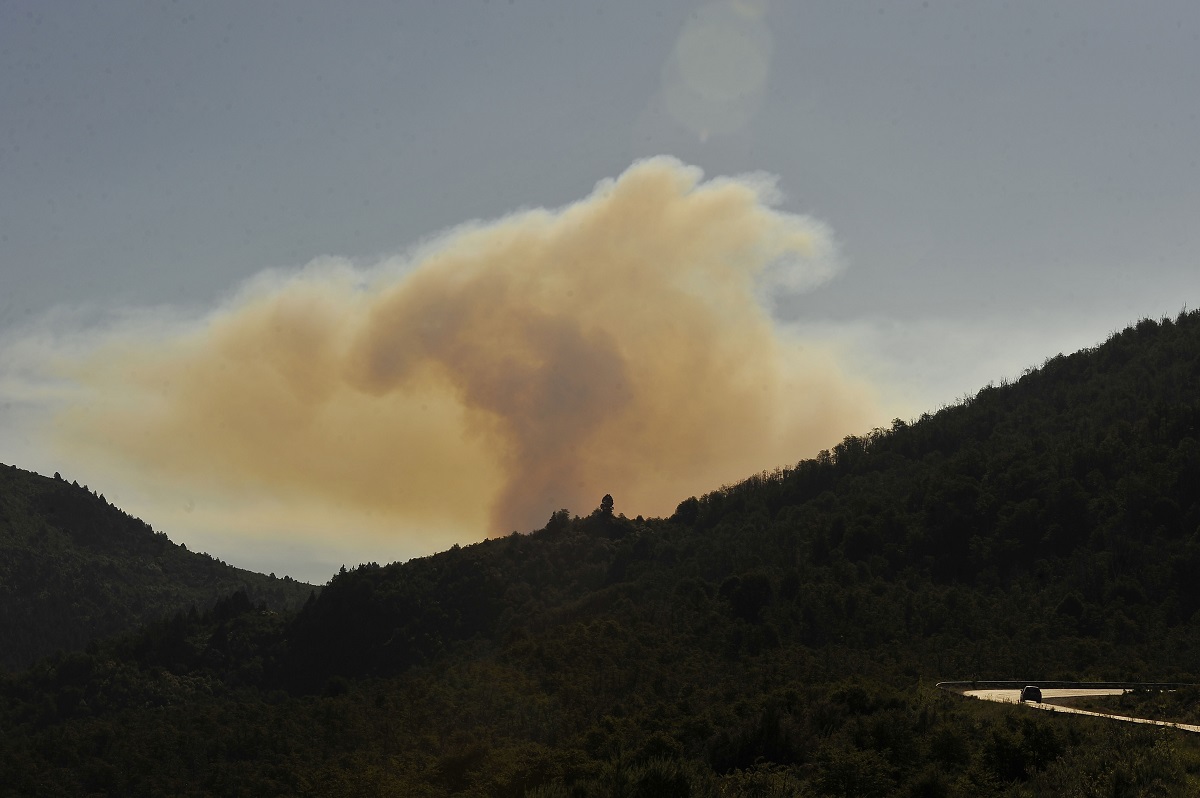The fire unleashed two weeks ago in the vicinity of Lake Martin, which until yesterday remained out of control, was caused by a lightning strike, which revived the debate on how should forest brigade teams deal with such cases.

–
A brigadista who participated in the operations against the fire in that area commented that the amount of combustible material accumulated on the ground is enormous and that there is evidence in the area that “it has not suffered fires for at least 100 years.”
But nevertheless, The belief that intervention should be moderated and fires evolve when they are of natural origin and do not affect populated areas was denied by specialists.
The doctor of biology Thomas Kitzberger is a researcher at the National University of Comahue and Conicet and has been studying the ecology of fire for years. Said a fire like Long Martin it was “absolutely predictable” and he observed that the very concept of natural fire, under these conditions, is highly debatable.
He said that the recurrence of thunderstorms tripled in the last 40 years and registered “an abrupt jump from the decade of the 90”. That factor, he stressed, is associated with global warming, which is the product of human presence and activity. The same is true of prolonged droughts, which favor large fires.
Another specialist, Juan Gowda (forestry engineer and doctor in ecology), reinforced this concept. He thought that en current conditions “it is difficult to define what exactly a naturally-caused fire is.”
He pointed out that by pollen analysis it was possible to determine with enough precision that there were periodic fires in the Andean forests in the last 3,000 years, but “that this is part of the system is in doubt.”

–
He said that in the region there are “legacies of great fires” from the beginning of the colonization of European origin, at the end of the XIX century, because “In the region a lot of fire was applied to gain grazing areas, and it was State policy.”
He said that “the current fires tend to copy old fires and spread through bushes, in general by slopes of exposure to the north, which are drier.”
According to Gowda, although the Lake Martin fire was caused by lightning in a difficult-to-reach site, the “human footprint” was present, due to the greater frequency of electrical storms, the lack of humidity and other phenomena derived from climate change.
Kitzberger said that the eventual decision to allow fires produced by lightning to evolve “is something that is under discussion in other parts of the world”, but he cautioned that it would only make sense “under average weather conditions.” He added that in a year as dry as the current one “it is absolutely suicidal to hold that position.” According to the expert, “we cannot allow fires of that magnitude because we are going to run out of forest.”
He pointed out that in wetter years, with a rainy spring, “as was 2019”, a similar fire “would have stayed on the peaks, because there is humidity and the ignition is very low. It spreads little “. But today the conditions “are very different.”
Combat strategies
The Conicet researcher said that “the forest today is full of infrastructures, human lives, It is no longer the pristine forest of a hundred years ago. Holding that fire should not be fought because it was started by lightning is a fallacy, a romantic measure ”.
He also attacked the lack of resources available to respond.
According to Kitzberger, “with a faster and more powerful initial attack the Lake Martin fire it would have been avoidable. Arriving with a helibalde two or three days later was useless. In other countries, behind the electrical storm they go with a real hydrant plane, the kind that dumps 10,000 or 12,000 liters of water. The initial attack is thus effective ”.
He said that fire crises are going to repeat and worsen and “You have to equip yourself better”, but he does not see that this policy is a priority for the authorities.
He assured that “more means are needed, and hydrant planes like the Canadians. Because the situation is really complex.
Kitzberger predicted that if they are caused by lightning, simultaneous fires will be commonplace in the future. “There is a model that we are publishing these days in a scientific journal,” he affirmed, “according to which between ignition and fuel availability, by the middle of this century the recurrence of fires is going to double or quadruple. And towards the end of the century it will multiply up to eight times, due to natural and anthropic causes ”.
He advised “to evaluate the decisions very well” and wondered “why is there not in National Parks and in the provinces a very clear protocol of when to let the fire work and when not to. That should be highly protocolized, especially when the means are scarce ”.
Information is key
Forest engineer Juan Gowda lives in El Manso, one of the human settlements threatened by the fire that started in Lake Martin. Assured that At the current stage of the fire, “you cannot do much more than take care of the populations.”
He noted that “This type of fire is very difficult to handle and control” and for now the most committed would be the residents of Lake Steffen, while El Manso would not be at risk, “at least in the next few days.”
Gowda considered that the information disclosed “is very important and has to be very clear, that it tells where the fire is going.” In his opinion, this has not always happened in the last two weeks, despite the fact that “the people involved in the combat task know a lot.”
He said that the Martin fire affects “very stony slopes, almost impassable, where there are cypress renewals, and then tall coihue and cypress forest. It is very difficult to work there ”.

–
–


